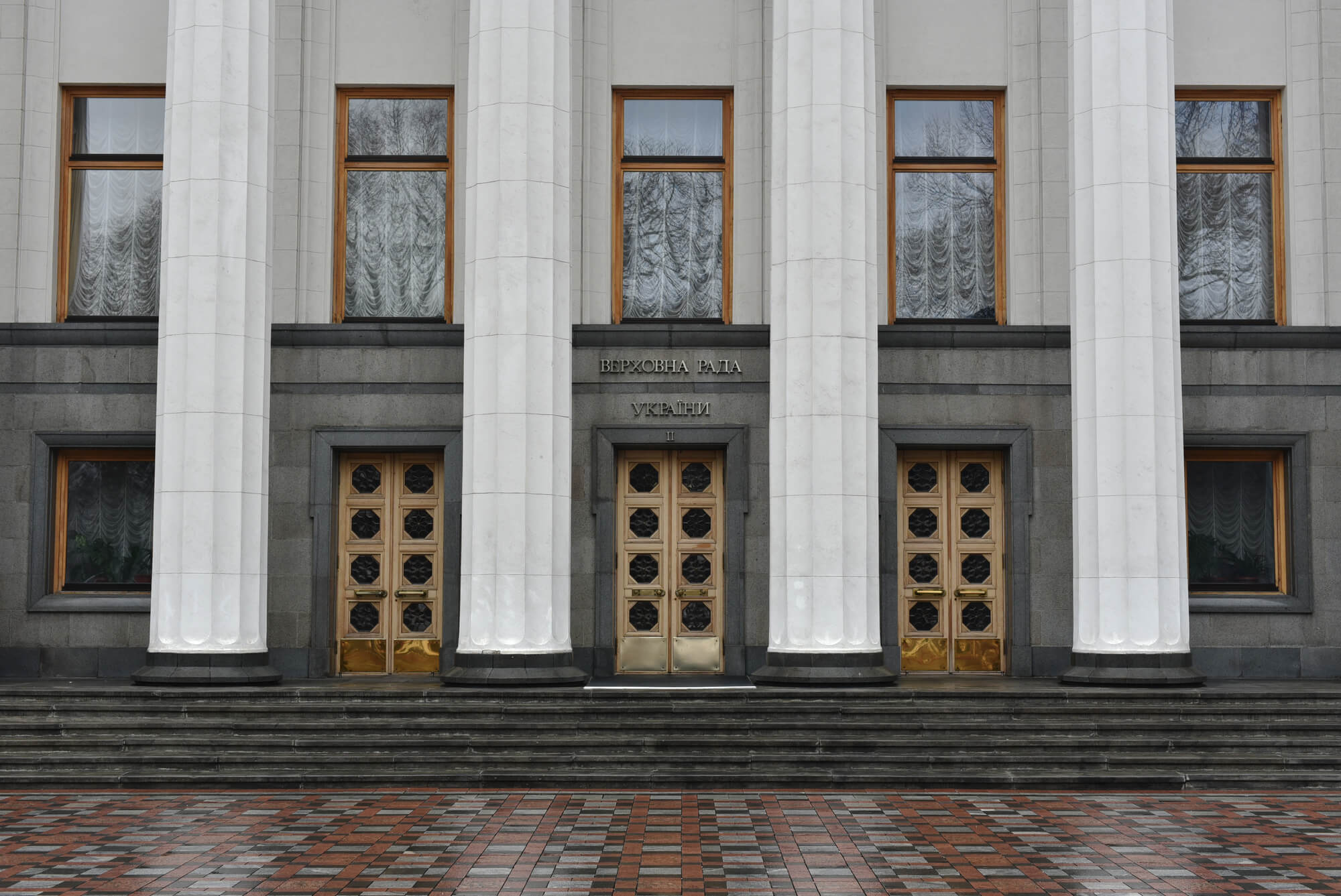During its independence, Ukraine faced deep financial and economic crises several times — in the early 1990s, in 1998, in 2008-2009 and in 2014-2015. One of the factors that exacerbated the crises was its imprudent fiscal policy.
Economic theory suggests that fiscal policy should be countercyclical, i.e. during economic downturns public expenditures should rise to soften the contraction, while during booms the government should try to reduce the deficit and repay some of its debts. However, governments’ short-sightedness is also a phenomenon with which economists are very familiar. Governments try to raise expenditures to stimulate the economy and please their voters. This is exactly the Ukrainian situation — governments of our country run a budget deficit even in times of a very strong growth (2002-2008).
To finance it, they borrowed primarily on external markets. Thus, in downturn times, when expenditures have to be increased, the following happened:
- UAH value of government debt jumped upwards since the crises were accompanied by sharp currency devaluations.
- External markets closed and the government struggled to finance the really needed budget deficit.
- The government turned to the IMF as a lender of last resort.
- IMF provided the bail-out but also recommended fiscal austerity and structural reforms. Fiscal austerity was usually implemented to receive the first tranche of a program but as soon as the situation stabilized structural reforms were forgotten.
The 2014-2015 period was different for several reasons. First, the crisis was too deep and accompanied by a loss of territory because of Russia’s aggression. Second, the newly appointed government was determined to implement structural reforms. Indeed, at the beginning of 2015 the Index for Monitoring of Reforms was at historically high levels. However, in a year or so the pace of reforms considerably slowed down, and implementation of programs with the IMF was delayed.
Prior to 2014, the Ukrainian fiscal system was characterized by several systemic flaws:
- Absence of fiscal rules. In generally weak institutional environment government short-sightedness becomes unavoidable. Fiscal rules can help mitigate this problem – that is why in Poland, for example, they are embedded into the Constitution. By fiscal rules we mean not only the most widely known public debt cap but also restrictions on frequency and size of state budget amendments.[1]
- Persistent budget deficit and thus rising public debt. At the same time, the government tried to ‘conceal’ the true level of debt by issuing state guarantees for borrowing of state-owned companies rather than direct government debt. For instance, although the state budget deficit in 2013 accounted for 4.3% of GDP, the total public finance deficit stood at 6.7% of GDP (the respective figures surged to 4.6% and astonishing 11.6% of GDP respectively in 2014).
- Inefficient use of funds. Although the program budgeting was introduced already in 2002, its implementation was rather formal than genuine. Purposes of government budgetary programs and indicators of their achievement were (and still are) vaguely defined and/or irrelevant. Another prominent example of inefficiency is keeping household gas tariffs 2-3 times below the market level. Equivalent to provision of a universal subsidy, this situation created plentiful opportunities for arbitrage — gas could be purchased from Naftogaz at ‘household’ price and sold to the industry at the market price. In 2014, this resulted in Naftogaz deficit higher than the State budget deficit (see the Energy Market section for details).
- Diversion of public funds to private pockets close to the government. This was implemented using various schemes. One of the most popular – ‘manual’ VAT refund to exporters. In order to get the refund, companies had to ‘give back’ up to 30% of the refund sum. Otherwise they could wait for years. Another vast source of rent was public procurement – government agencies used to buy things from their ‘preferred’ suppliers at higher than market prices.
- Overly regressive tax system. The government used to provide extensive tax exemptions to the largest companies which had a strong lobby in the Ukrainian parliament. In the early 2000s, these privileges were provided via the ‘special economic zones’ and ‘territories of priority development’ that covered 10% of Ukrainian territory and were extensively used to minimize tax payments by large businesses. Even after these tax loopholes were closed in 2005, numerous tax privileges for business remained. In 2011 tax privileges provided to 15 sectors of the economy amounted to 4.5% of GDP. In 2012-2013, estimated total revenue that business retained due to various tax privileges was about UAH 70 billion or 20% of potential tax revenue [2]. This created adverse incentives since honest taxpayers were ‘punished’ for their honesty and were at a competitive disadvantage compared to those who managed to evade taxes or get privileges. To compensate for the lost budget revenues, the government disproportionately taxed other economic agents, i.e. households.
In 2010, the government negotiated a program with the IMF to overcome the consequences of the world financial crisis. However, after receiving the first tranche, it stopped fulfilling program conditions. Thus, borrowing abroad became much harder for it. Before June 2012, while the conditions on foreign markets were more or less favorable, the Ministry of Finance managed to make several placements of Ukrainian debt securities. But soon the sentiment in foreign markets changed, the lenders’ appetite for high-risk countries plummeted, and the window of opportunity for placements closed.
After that, the government started using various more or less legal methods to finance the budget deficit:
- collection of additional funds from business, i.e. advance profit tax payment (as of January 1st 2015 these advance payments amounted to UAH 25.2 billion).
- implicit emission [43]: the Ministry of Finance would issue domestic government bonds and the National Bank of Ukraine would immediately buy them out. During 2011-2013, the NBU became the largest holder of domestic debt securities (figure 8).
- usage of funds of local governments stored at the Treasury account to finance expenditures of the central government.
Figure 1: Distribution of government bonds by holder types, year-end
Source: National Bank of Ukraine. *as of end-August
Besides, the government extensively issued state guarantees — for example to the state road construction company Ukravtodor or the State Agency for Investment and National Project Management (figure 9). In this way, the government did not formally assume additional debt obligations but in fact agreed to finance the debts of a large number of economic entities that did not have the resources to repay the debts themselves. Thus, even today the government is repaying the guarantees on the Ukravtodor debt accumulated in 2011-2012.
At the end of 2013 such policies have put the economy on the brink of the crisis, and Russian aggression only pushed it in the back.
Figure 2: Distribution of Ukrainian government debt, $ billion, as of year-end
Source: Ministry of Finance. *as of end-July
Progress of reforms
After the Revolution of Dignity, the situation in public finance management began to change rapidly – in particular, due to the lack of opportunities to continue financing the budget under the schemes practiced by the previous governments. The government negotiated a stand-by program with the IMF in 2014, replaced by a four-year Extended Financing Program (EFF) in 2015 and adhered to fiscal discipline implied by the program. For the first time in the history of Ukraine’s cooperation with the International Monetary Fund, Kyiv was able to receive three tranches under one program.
During 2014-2015, hidden budget deficits were eliminated. One of the most important steps in this was reduction of Naftogaz deficit from UAH 115 billion in 2014 to zero in 2016. Instead, the government introduced a more transparent scheme of providing citizens with utility subsidies.
During the last four years, both the state budget deficit and general government deficit have been kept within the limits defined by the IMF program. In 2015, the Parliament approved changes to the Budget Code introducing fiscal rules which significantly narrowed the list of cases when changes to the state budget can be made. This is an important safeguard for over-inflating budget expenditures. Using funds of local budgets to finance central budget expenditures is also prohibited.
Besides, now VAT refund is automatic, and VAT registry is open — so anyone can check which companies received VAT refund and when.
To control fiscal risks imposed by state-owned enterprises on public finances, the Ministry of Finance created a special unit within the Ministry.
Figure 3. Public finance deficit and government debt
Source: IMF data
The central bank independence was considerably strengthened. Thus, after 2016 the government does not issue bonds if there is no demand for them.
Government debt restructuring in 2015 allowed to reduce the debt burden on the state budget, and “distribute” public debt payments over time.
As a result, the government debt fell from 79% in 2015 to 61% in 2018.
The Ministry of Finance has also significantly expanded its ability to receive financing in the internal market from foreign investors. To this end, in early 2019 Ukraine joined the Clearstream system, the international securities depository.
The taxation system has also seen important changes.
Since 2015, the Ministry of Finance started to address the problem of regressive taxation. Gradually, the majority of tax exemptions for business were cancelled. The greatest resistance was on the side of the agrarian sector for which the special VAT regime was cancelled at the end of 2016 (previously, agro firms transferred the VAT payable to special accounts and could use this money for investment). Direct subsidies to agro sector were introduced instead.
At the same time, at the end of 2015 the rate of the single social contribution was cut from 44.6 to 22 percent. It was a significant step towards correcting inequalities in the taxation system and towards a fairer distribution of the tax burden among taxpayers.
Key priorities for the future
Over the five years following the Revolution of Dignity, key structural imbalances in the public finance sphere have been largely corrected.
However, the job is far from completed. At the moment the Ministry of Finance works on modernization of public finance management system to raise the efficiency of management of budget resources and government debt.
This implies:
1) effective budget planning process. The main task here is ensuring that every taxpayer hryvnia is used to the maximum benefit of the state (value for money).
To achieve this, the government needs to practically implement the medium-term budget planning already foreseen by legislation and to adopt a different approach to drafting budget programs, the quality of which determines the quality of the expenditure part of the budget. The programs should contain clear and measurable policy goals achievement of which requires public money.
An important step in this direction has already been made: since 2019 the Ministry of Finance started the spending review process. This approach is used by many countries to analyze whether certain budget expenditures help achieve public policy objectives to which they are tied.
At the moment the process is quite difficult due to (1) high level of conservatism of government bodies, (2) lack of clearly defined policy goals and (3) no quality statistics required to measure the progress towards the goals in many areas.
2) effective liquidity management. The Ministry of Finance needs tools to effectively manage funds of the state budget accumulated in the Treasury and FX accounts of the government. For example, depositing these funds for short periods of time can bring additional interest revenues to the budget and reduce liquidity risk.
3) effective public debt management aimed at minimizing the risks of financing the budget deficit and reducing the cost of borrowing for the Ministry of Finance.
4) reform of the State Fiscal Service, which in 2019 was divided into the State Customs Service and the State Tax Service. Declared aim of the reform is reduction of administrative burden during both paying taxes and crossing the border.
5) further promotion of the fairness of taxation system and switching to more progressive taxation when those with higher incomes also pay higher taxes (although tax rates may be flat). This among other requires solving the problem of the so-called internal offshores, among other — schemes used by large businesses to minimize taxation via registering their employees as individual entrepreneurs. The BEPS rules should be introduced and implemented to effectively deal with tax optimization by business.
In order to implement these reforms, the Ministry of Finance has already approved the Public Financial Management Strategy (2017), the Government Debt Management Strategy (2019), and the framework for the fiscal authorities reform. The Ministry must now ensure that these strategies are successfully implemented.
You can find out more about the ‘White Paper on Reforms 2019’ project and other chapters of the book at this link
[1] As an example, consider the budget-2012. The government led by Mykola Azarov (March 2010 – January 2014) tried to steeply raise social spending before the parliamentary elections held that year. Thus, the budget was amended 39 times, and at the end its revenues grew by 7.5%, expenditures by 10.5% and the deficit by 54%(!)
[2] Theoretical and practical aspects of the application of tax benefits in Ukraine, Serebryanska Y. V, Volochay A. S.
[3] This is directly forbidden by the law, and formally a secondary market was used, e.g. government increased Naftogaz capital with bonds and the latter sold bonds to the NBU
Attention
The author doesn`t work for, consult to, own shares in or receive funding from any company or organization that would benefit from this article, and have no relevant affiliations



